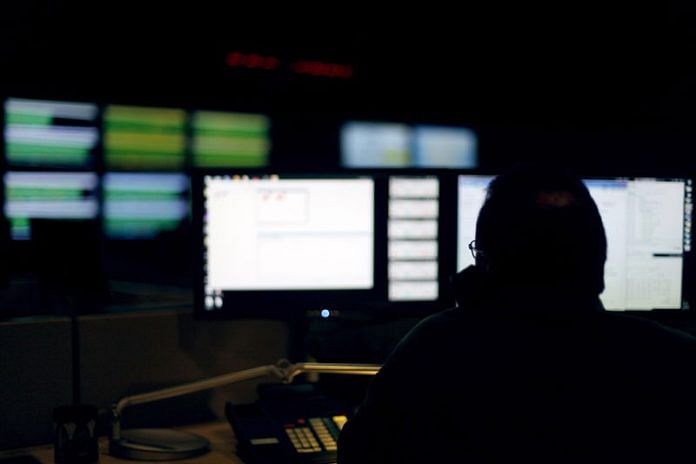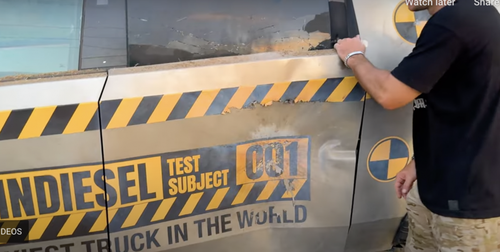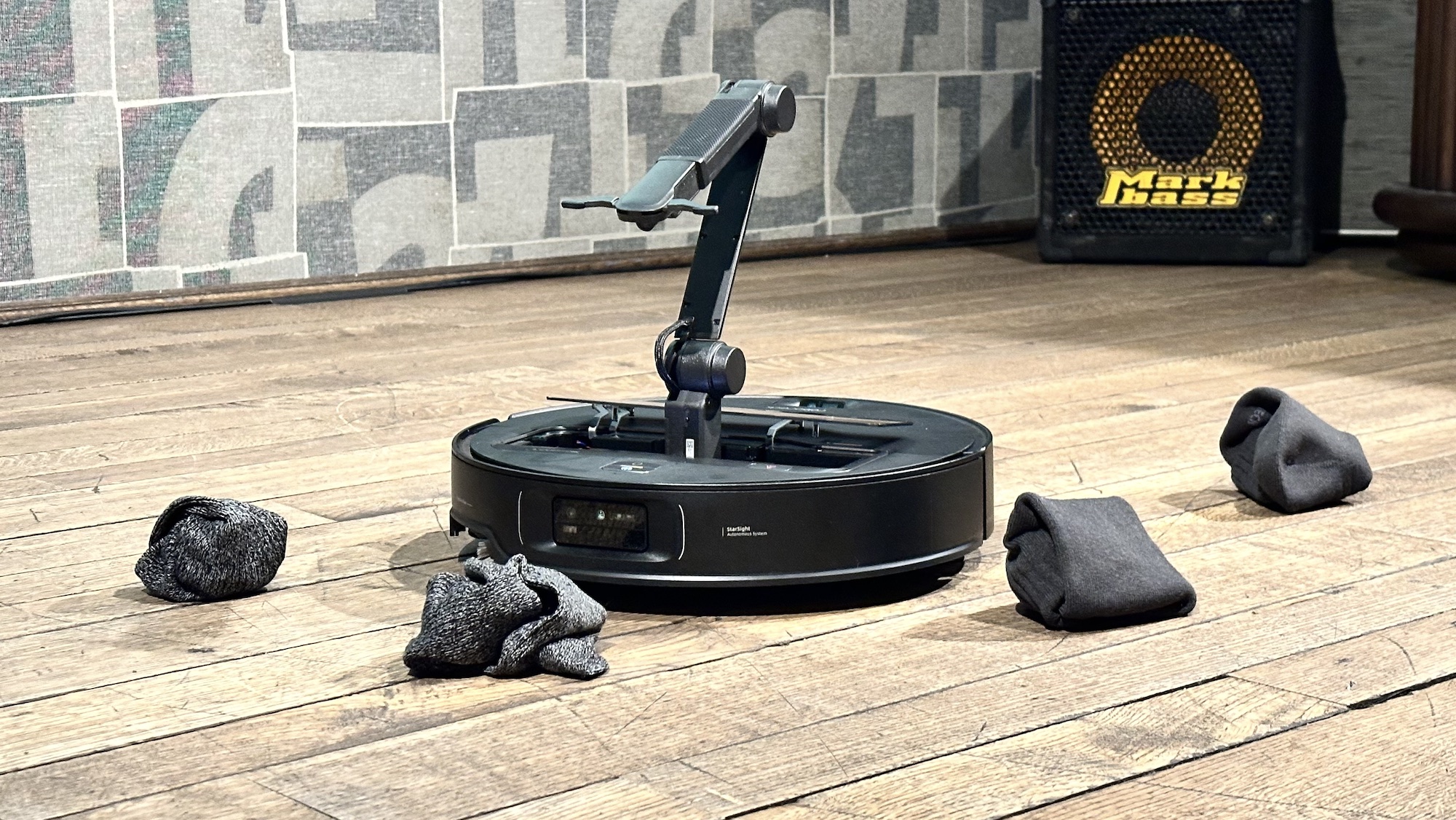a lucky coin mangabuddy
2025-01-13 2025 European Cup a lucky coin mangabuddy
News
An abandoned runway at Syracuse Hancock International Airport (SYR) is about to get a new lease on life, following Micron Technologies' plans to use the area for a parking lot. A new life for runway 6/24 Syracuse International Airport is located five miles from the city's downtown core and is currently operated by the Syracuse Regional Airport Authority. The airport has two active runways: 10/28 (9,003 feet) and 15/33 (7,500 feet). However, a third was abandoned over five decades ago and has never been covered ( runway 6/24). Micron Technology Inc. is planning to build a new large semiconductor plant in the neighboring area of Clay. During construction, hundreds of staff will need parking space. Micron plans to use shuttle buses to transport construction workers between the airport runway parking lot and White Pine Commerce Park, where their factory is being developed. They have signed a lease for the runway for up to five years. Micon Technology, which manufactures memory chips, announced that it had selected the area of Clay for a semiconductor fabrication facility. The development is expected to cost up to $100 billion and establish around 50,000 jobs over a 20-year lifespan. With such development, the airport expects cargo traffic to increase by almost triple. In total, over 16 commercial airports serve the state. Have you heard the Simple Flying podcast recently? Preparing for increased traffic volumes at SYR Syracuse Hancock International Airport is already planning for increased traffic, with a long-term plan to expand the current airport terminal and develop a larger parking garage. Micron intends to commence construction on its 1,400-acre site on Caughdenoy Road and Route 31 next year. Using the abandoned runway will add around 1,700 to 2,000 extra parking spaces for construction workers. To ensure efficiency of use for the abandoned runway, Micron will be paying for parking stripes to be painted on the runway and, as already noted, will provide shuttle buses to and from the location during construction. The old runway is one of three at the airport and extends to 5,500 feet. It was built by the United States Army Air Forces in 1942 and, during World War II, was also a storage base for the B-17 and B-24 bombers . It was eventually retired when the city took possession of the airport, and the area was being intersected by Interstate 81. Two of the most notable aircraft in the World War II era. Simple Flying reached out to Syracuse Hancock International Airport to comment on the creative new use of the abandoned runway. However, they had not responded by the time this article was published. We will update this article when we receive a response. Get all the latest aviation news for North America here Airlines serving Syracuse According to FAA enplanement records , excluding airports serving New York City, Syracuse is one of the busiest airports in New York State (after Buffalo, Albany, and Rochester). Current airport operators include Allegiant, American, Breeze, Delta Air Lines, Frontier, JetBlue, Sun Country, and United Airlines . Three cargo carriers also serve the airport, with operations by Quest Diagnostics, FedEx Express , and UPS Airlines. NOTAMs reportedly indicated that the runway was undergoing routine maintenance.
calico corners phone number
。
STORY: CANADIAN PRIME MINISTER JUSTIN TRUDEAU: "It was an excellent conversation." :: File Canadian Prime Minister Justin Trudeau said on Saturday he had an "excellent conversation" with Donald Trump. :: November 29, 2024 He made an unannounced visit to Florida on Friday to meet with the U.S. President-elect. There have been heightened fears about a trade war... with Trump pledging to impose 25% tariffs on Canadian and Mexican imports after he is sworn in as president in January. :: File Trump said discussions with Trudeau about the border, trade and energy were "very productive." In a post on Truth Social, he said they also talked about the deadly opioid fentanyl and immigration. :: U.S. Customs and Border Protection :: File Trump wants to use tariffs to get two of the U.S.' biggest trading partners to help stem the flow of illegal drugs into the U.S... and migrants crossing illegally into the country. Mexico's Claudia Sheinbaum warned this week that Trump's plan would have dire consequences and suggested possible retaliation. Many economists have said Trump's plan to impose tariffs on imports will increase costs for U.S. consumers. Trump has said tariffs on trading partners will help protect U.S. manufacturers and boost domestic job growth.For years, patients in the U.S. health care system have grown frustrated with a bureaucracy they don’t understand. Doctors are included in an insurer’s network one year but not the next. Getting someone on the phone to help can be next to impossible. Coverage of care and prescriptions is often unceremoniously denied. This week’s fatal shooting of UnitedHealthcare CEO Brian Thompson has unleashed a wave of public feeling — exasperation, anger, resentment, helplessness — from Americans sharing personal stories of interactions with insurance companies, often seen as faceless corporate giants. In particular, the words written on ammunition found at the shooting scene — “delay,” “deny” and “depose,” echoing a phrase used to describe how insurers dodge claim payouts — amplified voices that have long been critical of the industry. “All of a sudden, I am fired up again,” said Tim Anderson, describing how his wife, Mary, had to deal with UnitedHealthcare coverage denials before she died from Lou Gehrig’s disease, or amyotrophic lateral sclerosis, in 2022. Anderson said they couldn’t get coverage for machines to help his wife breathe or talk — toward the end, she communicated by blinking when he showed her pictures. The family had to rely on donations from a local ALS group, he said. “The business model for insurance is don’t pay,” said Anderson, 67, of Centerville, Ohio. “When Mary could still talk, she said to me to keep fighting this,” he added. “It needs to be exposed.” For Anderson and others, Thompson's death and the message left at the scene have created an opportunity to vent their frustrations. Conversations at dinner tables, office water coolers, social gatherings and on social media have pivoted to the topic, as police efforts to find the gunman keep the case in the news. Hans Maristela said he understands why the chatter is bubbling up. The 54-year-old caregiver in California was moved to comment on Facebook about UnitedHealthcare's reputation of denying coverage. As a Catholic, he said, he grieves Thompson's death and feels for his family, especially with the holidays around the corner. But he sees frustration with insurers even among his clients, most of them wealthy older people who've not been shielded from high out-of-pocket costs. “And then you know the CEO of this company you pay a lot of money to gets $10 million dollars a year, you won’t have a lot of sympathy for the guy," Maristela said, citing Thompson's compensation package that included base pay and stock options. “Health care is a business, I understand, but the obsession with share price, with profit, has to be reevaluated.” University of Pennsylvania researcher Michael Anne Kyle said she's not surprised by the growth of conversation around insurers. “People are often struggling with this by themselves, and when you see someone else talk about it, that may prompt you to join the conversation,” she said. Kyle studies how patients access care and said she's seen frustration with the system build for years. Costs are rising, and insurers are using more controls such as prior authorizations and doctor networks to manage them. Patients are often stuck in the middle of disputes between doctors and insurers. “Patients are already spending a lot of money on health care, and then they’re still facing problems with the service,” she said. Insurers often note that most of the money they bring in goes back out the door to pay claims, and that they try to corral soaring costs and the overuse of some care. In Ohio, Anderson said his initial reaction to the CEO shooting was to question whether it was connected to a coverage denial, like the ones he'd experienced with his wife. “I definitely do not condone killing people,” he said. “But I read it and said, 'I wonder if somebody had a spouse whose coverage was denied.’” It's something Will Flanary, a Portland-based ophthalmologist and comedian with a large social media following, saw online a lot in the shooting's immediate aftermath and found very telling. “It’s zero sympathy,” he said. “And the lesson to take away from that is not, ‘Let’s shame people for celebrating a murder.’ No, it’s: ‘Look at the amount of anger that people have toward this system that’s taken advantage of people and do something to try to fix that.’” Flanary's content, published under the name Dr. Glaucomflecken, started out as niche eye doctor jokes and a way to cope with his own experiences with two cancer diagnoses and a sudden cardiac arrest. But it has evolved, featuring character skits that call attention to and satirize the decisions of large health insurers, including UnitedHealthcare. He said he's never seen conversations around health insurance policy take off the way they did this week — and he hopes these new voices can help bring about change. “I’m always talking about how powerful social media can be with advocacy," he said, "because it really is the only way to put a significant amount of pressure on these corporations who are doing bad things for patients.” ____ The Associated Press Health and Science Department receives support from the Howard Hughes Medical Institute’s Science and Educational Media Group and the Robert Wood Johnson Foundation. The AP is solely responsible for all content.
Andrew Luck returns to Stanford as the GM of the football programI have become a fans favourite at Manchester United but I had no idea they loved me so much
Protesters pack Georgian streets over scrapped plans to join EUMADISON, Wis. (AP) — Wisconsin public worker and teachers unions scored a major legal victory Monday with a ruling that restores collective bargaining rights they lost under a 2011 state law that sparked weeks of protests and made the state the center of the national battle over union rights. That law, known as Act 10, effectively ended the ability of most public employees to bargain for wage increases and other issues, and forced them to pay more for health insurance and retirement benefits. Under the ruling by Dane County Circuit Judge Jacob Frost, all public sector workers who lost their collective bargaining power would have it restored to what was in place prior to 2011. They would be treated the same as the police, firefighter and other public safety unions that were exempted under the law. Republicans vowed to immediately appeal the ruling, which ultimately is likely to go before the Wisconsin Supreme Court. That only amplifies the importance of the April election that will determine whether the court remains controlled 4-3 by liberal justices. Former Gov. Scott Walker, who proposed the law that catapulted him onto the national political stage, decried the ruling in a post on the social media platform X as “brazen political activism.” He said it makes the state Supreme Court election “that much more important.” Supporters of the law have said it provided local governments more control over workers and the powers they needed to cut costs. Repealing the law, which allowed schools and local governments to raise money through higher employee contributions for benefits, would bankrupt those entities, backers of Act 10 have argued. Democratic opponents argue that the law has hurt schools and other government agencies by taking away the ability of employees to collectively bargain for their pay and working conditions. The law was proposed by Walker and enacted by the Republican-controlled Legislature in spite of massive protests that went on for weeks and drew as many as 100,000 people to the Capitol. The law has withstood numerous legal challenges over the years, but this was the first brought since the Wisconsin Supreme Court flipped to liberal control in 2023. The seven unions and three union leaders that brought the lawsuit argued that the law should be struck down because it creates unconstitutional exemptions for firefighters and other public safety workers. Attorneys for the Legislature and state agencies countered that the exemptions are legal, have already been upheld by other courts, and that the case should be dismissed. But Frost sided with the unions in July, saying the law violates equal protection guarantees in the Wisconsin Constitution by dividing public employees into “general” and “public safety” employees. He ruled that general employee unions, like those representing teachers, can not be treated differently from public safety unions that were exempt from the law. His ruling Monday delineated the dozens of specific provisions in the law that must be struck. Wisconsin Republican Assembly Speaker Robin Vos said he looked forward to appealing the ruling. “This lawsuit came more than a decade after Act 10 became law and after many courts rejected the same meritless legal challenges,” Vos said in a statement. Wisconsin Manufacturers and Commerce, the state's largest business lobbying organization, also decried the ruling. WMC President Kurt Bauer called Act 10 “a critical tool for policymakers and elected officials to balance budgets and find taxpayer savings." The Legislature said in court filings that arguments made in the current case were rejected in 2014 by the state Supreme Court. The only change since that ruling is the makeup of Wisconsin Supreme Court, attorneys for the Legislature argued. The Act 10 law effectively ended collective bargaining for most public unions by allowing them to bargain solely over base wage increases no greater than inflation. It also disallowed the automatic withdrawal of union dues, required annual recertification votes for unions, and forced public workers to pay more for health insurance and retirement benefits. The law was the signature legislative achievement of Walker, who was targeted for a recall election he won. Walker used his fights with unions to mount an unsuccessful presidential run in 2016. Frost, the judge who issued Monday's ruling, appeared to have signed the petition to recall Walker from office. None of the attorneys sought his removal from the case and he did not step down. Frost was appointed to the bench by Democratic Gov. Tony Evers, who signed the Walker recall petition. The law has also led to a dramatic decrease in union membership across the state. The nonpartisan Wisconsin Policy Forum said in a 2022 analysis that since 2000, Wisconsin had the largest decline in the proportion of its workforce that is unionized. In 2015, the GOP-controlled Wisconsin Legislature approved a right-to-work law that limited the power of private-sector unions. Public sector unions that brought the lawsuit are the Abbotsford Education Association; the American Federation of State, County and Municipal Employees Locals 47 and 1215; the Beaver Dam Education Association; SEIU Wisconsin; the Teaching Assistants’ Association Local 3220 and the International Brotherhood of Teamsters Local 695. Copyright 2024 The Associated Press. All rights reserved. This material may not be published, broadcast, rewritten or redistributed without permission. Get local news delivered to your inbox!
Sources: Frost set for return to UCF sideline
Digital Turbine director Sterling Michelle buys $10,010 in stockTROY – Earlier in the week, Troy coach Gerad Parker stated, “It’s 100 percent critical that we finish this season the right way.” Consider it done. The Trojans continued their late-season surge by absolutely demolishing Southern Mississippi 52-20 in the season finale at Veterans Memorial Stadium before a crowd of 19,521 on Saturday afternoon. It gave Troy wins in three of its final four games to complete Parker’s first season in charge at 4-8 overall, 3-5 in Sun Belt Conference play. “I couldn’t be more happier where it finished,” Parker said. “That will build momentum for our current roster as well as in recruiting, and we’re going to fight to get that done to make sure we start the right way in 2025. “I think you’re going to see a hunger when these guys get back on January 14 for the second semester of school. They’ll know what this wants to look like – more understand where we fell short and also what our momentum is. Troy's Jordan Stringer (7) and Ian Conerly-Goodly (39) pursue a USM running back. “I don’t think you’ll have to ask anybody in our locker room to prepare or be ready for offseason workouts, because they know what they want to accomplish in ’25.” It was a good day for individual accolades as well. Troy receiver Devonte Ross and running back Damien Taylor both went over the 1,000-yard mark for the season – Ross in receiving by catching five passes for 70 yards on Saturday and Taylor in rushing by gaining 169 yards on 23 attempts with three touchdowns. When Taylor scored on a 35-yard touchdown run with just under six minutes to play in the game, he had totaled 999 yards on the season. He was aware one more yard was needed to reach the 1,000-yard mark. “The defense looked at me and said, ‘Hey, we’re going to get you the ball back,'” Taylor said of conversations on the sidelines. "And then the offensive line looked at me and said, ‘Hey, one yard.’ I knew I had to get one more.” LJ Green got an interception for the Trojans on the ensuing possession and returned it 49 yards to the 16. Taylor went over the 1,000-yard mark with a carry on the next play for 11 yards – putting him at 1,010 yards for the season. On the next play, Jordan Lovett went in from 5 yards for a score, making it 52-20 after the PAT. It was the first time since 2012 that Troy had a 1,000-yard rusher and 1,000-yard receiver in the same season. “It means a lot,” Ross said. “Being here three years and being around some great receivers ... showing me what it takes to be a great receiver. My teammates. I wouldn’t be able to do any of this without them pushing me hard and the O-line doing their job coming together at the end of the year and not allowing sacks.” Defensively, Brendan Jackson led the way with nine tackles, while Ian Conerly-Goodly and Phillip Lee each had seven. Lee also had two sacks and 3.5 tackles for losses and was seemingly in the Southern Miss backfield all game. “The last game of the season, I just wanted to put on tape what’s coming for next year,” Lee, a junior bandit linebacker, said. “For every team, I want to let them know, I’m eating and I’m not stopping.” Things didn’t start out so rosy for the Trojans. Troy tight end Trae Swartz can't come up with a catch against USM. Troy forced a three-and-out on the first series of the game, but the ensuing punt bounced off the helmet of Troy’s Joe Lott and the Golden Eagles recovered at the Trojans’ 41. On first down, quarterback Tate Rodemaker connected with Ti Mims down to the 1. Two plays later, Kenyon Clay went in for the score. The Golden Eagles then converted a try for 2 as Bryce Loften passed to a wide-open Kyirin Heath to make it 8-0. The Trojans scored on their first offensive series when Taylor ran in from 6 yards out on a third-and-goal situation. Scott Taylor Renfroe kicked through the extra point to pull Troy within 8-7 with 7:28 left in the opening quarter. Troy took its first lead of the game with just under three minutes left in the first quarter when Renfroe nailed a career-long 50-yard field goal, putting the Trojans ahead 10-8. Matthew Caldwell runs for a touchdown during Troy's win. Matthew Caldwell scored on a 14-yard keeper around the right side to make it a 17-8 Troy lead following the PAT with 8:50 left in the second quarter to complete a 13-play, 67-yard drive. In what was a scary incident in the first half, Troy senior safety Cecil Powell suffered a non-contact, non-football related medical emergency in the first quarter, was treated on the sideline and transported to a local hospital for evaluation. He was listed in stable condition Saturday afternoon and Parker said he was being moved from Troy to a hospital in Montgomery. Taylor got the scoring going in the third quarter with a 56-yard run one play after USM was stopped on a fourth-and-7 try when linebacker Jackson shot through to sack Rodemaker for a 7-yard loss. Renfroe added the PAT to make it 24-8 with 6:04 left in the third. Southern Miss wide receiver Ti Mims stretches for yardage after a catch. Southern Miss quickly answered when Rodemaker connected with Larry Simmons on a 75-yard touchdown pass, the longest completion of the year for the Golden Eagles. Simmons caught the pass at the USM 40 and then broke away for the score. USM failed on a try for 2, leaving the score 24-14 in Troy’s favor. Troy responded on its next possession, driving 75 yards in 10 plays to score when Caldwell spotted tight end Trae Swartz over the middle for a 10-yard TD. Renfroe’s PAT made it 31-14. For the game, Caldwell completed 14-of-26 passes for 187 yards and the one touchdown. Midway through the fourth quarter, Southern Miss got a TD on a 4-yard pass from Rodemaker to Mims. The extra point kick failed, but USM had pulled within 31-20 with 7:05 left. Taylor got Troy back on the scoreboard with a 35-yard TD run with just under six minutes left. Renfroe’s kick made it 38-20. The Trojans virtually put it away on the next USM possession when safety Conerly-Goodly intercepted a pass and returned it 31 yards for a score, making it 45-20 after the PAT before Lovett’s final touchdown run. Southern Miss ended its season at 1-11 overall and 0-8 in the league. Be the first to know Get local news delivered to your inbox!WALL, S.D. — Jim Boensch points out a number of switches and lights on a nearby electronic console. He gives a detailed rundown of what each does as well as gives a demonstration of an ear-piercing alarm. Everything seems to be operating just as it should. He nods and then turns to the others in the room and prepares to proceed. ADVERTISEMENT “OK,” he says with a stark calmness. “Let’s jump into World War III.” Thankfully, there is no danger of nuclear annihilation on the horizon. Boensch, a retired Air Force major, is in the underground Delta-1 Launch Control Facility at the Minuteman Missile National Historic Site just a short drive down Interstate 90 from Wall in western South Dakota. The equipment he is demonstrating is all era-accurate and authentic, though decommissioned, and was one of 15 such facilities in the state that once stood guard every second of every day in the event the president of the United States issued an order for a nuclear strike against a foreign enemy. With the late 1991 dissolution of the Soviet Union, the chief nuclear rival of the United States, the need for the Delta-1 site and its South Dakota sister facilities became less crucial, and with the exception of the one near Wall, all were decommissioned and destroyed. “This is the last pair of this type in the world. There are no more,” Boensch told the Mitchell Republic during a tour of the grounds earlier this year, referring to the underground launch station and a deactivated missile silo just a few miles away. “They blew up the launch tubes and sold the land back. 149 of 150 missiles are gone.” Once part of the 44th Strategic Missile Wing at Ellsworth Air Force Base, the site now serves as a museum, open to tours to the public and dedicated to the history of the Cold War and the role South Dakota and the Great Plains states played in the conflict. It is a chance to see the last remnants of the state’s nuclear Minuteman Missile fields. In 1985, if South Dakota had been ranked apart from the United States based on the number of nuclear warheads located within its borders, the 150 warheads on the Minuteman Missiles would have ranked the state sixth in the world. That would place it right behind China with 243. It had more nuclear warheads than India, Pakistan, Israel, North Korea and South Africa combined. ADVERTISEMENT When the United States dropped a pair of atomic bombs on Japan in 1944, it hastened the close of World War II. With Nazi Germany already defeated in Europe, the world breathed a sigh of relief as its armies, navies and air forces were recalled home and the conflict began to recede into the history books. Though the United States and Soviet Union were allies and on the same victorious side during World War II, a division in military aims and ideology soon began to widen between the superpowers. By 1949, the Soviet Union developed its own nuclear technology, and a decades-long arms race kicked off, with both countries building large nuclear arsenals that threatened to destroy the other side. Intercontinental ballistic nuclear missiles were part of those arsenals. Able to be launched at a moment’s notice and fly thousands of miles to deliver an atomic warhead payload on the enemy, the Minuteman Missiles were among the first developed by the United States as part of its “nuclear triad,” a series of nuclear warhead delivery methods that, along with the missiles, included missiles launched from submarines and bombs delivered by heavy bombers. When the United States was looking for a place to establish those nuclear missile launch sites, they turned to a region in the Great Plains that included South Dakota, North Dakota, Wyoming and Montana. “Most of them were in the middle part of the United States, up north. These missiles would go over the North Pole, and it shortened the distance to your targets without having to build bigger missiles that would be required if you put them down in Texas or Florida,” Boensch said. The United States struck deals with local landowners, and by 1963 the first silos in South Dakota were active. Over their service life those silos housed the Minuteman I and II series of missiles, the second iteration of which could carry a 1.2 megaton warhead capable of delivering the equivalent devastation of 1.2 million tons of TNT with a range of 7,500 miles. That allowed it to strike virtually any target on Earth. Each one carried 66 times the power of the bomb dropped on Hiroshima, Japan, a bomb that killed 144,000 people. There were 150 such missiles within South Dakota’s borders. Always at the ready, the missiles were never used and were removed from active status in 1991 before being completely removed later in the early 1990s. Congress established the Minuteman Missile National Historic Site in 1999, the legislation for which was passed after a bill to establish the site was introduced in 1998 by Senators Tom Daschle and Tim Johnson. ADVERTISEMENT Though now more than a quarter century removed from service, the Delta-01 launch facility, and its nearby companion historic site, the Delta-9 Missile Silo, appears much as it did when it was active. During its service, access to the facility was strictly controlled, but the existence of the missiles and even their locations were not top secret. Local residents were aware of the nature of their neighbors, and even the Soviet Union were keen as to where they were located. That was by design, said Boensch, who works as an education technician at the Minuteman Missile National Historic Site. “We were a deterrent force. To have a good deterrent, you have to have a really great weapon, so from the other side they know you’ve got it and they know you can use it,” Boensch said. “It was no secret. All you had to do was follow the power line out to the middle of nowhere and you had a missile.” The launch facility appears as a relatively small, unremarkable low-slung building surrounded by a chain link fence and gate. A basketball hoop stands just inside the fencing. Entering the building takes one into a receiving area, where missile crews, which were swapped out after every 24 hour shift, would be vetted and checked in. Through one door in that area, toward the back of the building, is a living area that housed facility personnel, including security. Preserved much as it was during its most recent active period, it features a lounge area with a television, a small dining area, kitchen and sleeping quarters for those on-site. Space is limited, the accommodations simple but comfortable. For the most part, it does not resemble a military facility. ADVERTISEMENT It is through a second door in the receiving area that the perception changes. There, an elevator with highly controlled access leads to the underground bunker that housed the actual launch controls for the missiles at their command. A brief elevator ride descends approximately 30 feet to reveal a dark, concrete bunker area. A few meters ahead, a 16,000 pound blast door that sealed the missileers from the outside world is propped open. In a display of tongue-in-cheek humor, a mock Domino’s Pizza box has been painted on the front with the slogan “Worldwide delivery in 30 minutes or less or your next one is free.” Squeezing past the blast door brings visitors into a brightly-lit room full of vintage equipment that was crucial to launch operations. Low frequency and satellite communication systems line the walls, and a pair of chairs bolted to slide rails gave personnel a station from which to tend to it all while remaining strapped in securely. Simple sleeping bunks with a curtain grace the opposite wall. Staff in the bunker drilled regularly for a number of different scenarios, including launches. But even with constant training, there was a lot of downtime below ground. Boensch said many missileers would spend their time reading textbooks, preparing for exams. “We read. About half of us got our master’s degree. It was a great place to study. And I had two little girls back at the base. I wanted to play with them when I got off duty (and not study),” Boensch said. Studying aside, they were also prepared in the event of a nuclear emergency. There is no one button to launch the missiles. Once a confirmed launch order was received, each missileer turned a key from their stations, which were about 12 feet apart. Each key had to be turned within two seconds of each other, which prevented any one person from initiating a launch without the other. ADVERTISEMENT On one wall is a small red metal lock box with two combination padlocks. Like the two-person key launch system, the padlocks are another safeguard against any single person going rogue and attempting an unauthorized launch on their own. Both people had to be in agreement to open the box. “Why in the world would you need a safe up here inside this bank vault? With two locks on it, you did not know the combination of your partner’s locks. You were the only person in the world that knew your opening combination. Trust was a very hard thing to come by when you’re dealing with nuclear weapons. You’ve got to be absolutely sure,” Boensch said. The box contained materials for authenticating communications to make sure any such launch order received was authorized by the president of the United States or their successor. The content of those authenticators is still classified to this day. The actual launch keys were also inside the box. Things begin to move quickly once the lock box is opened. “We lay our keys down on this cabinet. We pick the right one. We do this independently of the other person,” Boensch said. “We go through whatever procedures we do to authenticate the message. Once we agree it is a valid and authentic message, we’re going to war. Nuclear war. And we don’t have a lot of time to do this.” The hours of practice and drills kick in. The pair are now almost on autopilot, having ceaselessly trained for this exact moment. Each missileer inserts their launch key into the receptacle at their station. They strap their seatbelts on. At the end of the countdown sequence, both turn their keys. At that point, missile silos like the Delta-9 site preserved a few miles down the road, move into action. The door at the top of the silo is flung off, revealing the weapon underneath. ADVERTISEMENT “An explosive squib fires, dragging that whole thing into a recess in that 12-foot diameter launch tube, getting it out of the way of the missile. About the same time, two Howitzer shell-like gas generators drive a piston tied to a pulley down, rolling that massive 180,000-pound door sideways to the south, rolling on 18-inch steel wheels,” Boensch said. “It clears that tube in less than three seconds.” Moments after the launch order is received, a Minuteman Missile is airborne and bound for its target. World War III has begun. Boensch and his fellow Air Force colleagues never had to take those fateful steps to actually launch a nuclear missile. Cool heads and world-saving diplomacy eventually won the day, and with the collapse of the Soviet Union, a nuclear deterrent on the Cold War scale was no longer needed. The missile fields in South Dakota were decommissioned and destroyed, with the exception of the facilities at which Boensch and his colleagues give tours to the public. Modern land-based missile facilities are still a part of the United States’ defense forces, with locations still maintained in North Dakota, Montana and Wyoming. The Cold War may be over, but the need for a nuclear deterrent remains, Boensch said. Geopolitical winds can shift, and leadership changes at the national level can alter defense priorities. Regardless of election results, the safety of America remains paramount, Boensch said. In addition to the current modern land-based missile silos and submarine-based nuclear weapons, the Air Force is expected to purchase 100 new B-21 Raider bombers, the first of which will be hosted at Ellsworth Air Force Base. The new bomber, which will complement the current fleet of B1 and B2 bombers, represents a generational leap as a dual nuclear and conventionally capable, stealth, penetrating, long-range strike platform, according to a release from the Air Force. “I think regardless of what political party is in charge, I think everybody realizes it’s a necessity,” Boensch said. Once a domain strictly off-limits to the general public, the Minuteman Missile National Historic Site now welcomes them with open arms to share the story of the sentinels on the prairie that assured America’s enemies any attack would be met by an equal, if not greater, force in return. Nearly 100,000 people visited the site in 2020. Some of those are fellow veterans that Boensch gets to interact with, sharing his stories and listening to theirs. It also offers him a chance to reflect on his own service and the service of his fellow missileers, most of which were no older than their mid-20s when they were stationed here. The technology and procedures are indeed fascinating, but in the end, the life or death actions came at the hand of missileers with a pair of small brass keys. There was no glory in the role, just a call to serve their country and to be at the forefront of protecting it should it come under attack. “I had to do some heavy thinking on what I really valued in life, what I really considered important. And I think service is the real reason why we’re here. I really do,” Boensch said. “But it’s just so rewarding to shake the hands of these people. And the folks who never served, too.” The Minuteman Missile National Historic Site is open to tours to the public. More information on the facilities and tours can be found at www.nps.gov/mimi/index.htm or by calling 605-433-5552.
Marvell Technology, Inc. Declares Quarterly Dividend PaymentBy MITCH STACY COLUMBUS — A fight broke out at midfield after Michigan stunned No. 2 Ohio State 13-10 on Saturday as Wolverines players attempted to plant their flag and were met by Buckeyes who confronted them. Police had to use pepper spray to break up the players, who threw punches and shoves in the melee that overshadowed the rivalry game. Ohio State police said in a statement “multiple officers representing Ohio and Michigan deployed pepper spray.” Ohio State police will investigate the fight, according to the statement. After the Ohio State players confronted their bitter rivals at midfield, defensive end Jack Sawyer grabbed the top of the Wolverines’ flag and ripped it off the pole as the brawl moved toward the Michigan bench. Eventually, police officers rushed into the ugly scene. Ohio State coach Ryan Day said he understood the actions of his players. “There are some prideful guys on our team who weren’t going to sit back and let that happen,” Day said. The two Ohio State players made available after the game brushed off questions about it. Michigan running back Kalel Mullings, who rushed for 116 yards and a touchdown, didn’t like how the Buckeyes players involved themselves in the Wolverines’ postgame celebration. He called it “classless.” “For such a great game, you hate to see stuff like that after the game,” he said in an on-field interview with Fox Sports. “It’s just bad for the sport, bad for college football. But at the end of the day, you know some people got to — they got to learn how to lose, man. ... We had 60 minutes, we had four quarters, to do all that fighting.” Michigan coach Sherrone Moore said everybody needs to do better. “So much emotions on both sides,” he said. “Rivalry games get heated, especially this one. It’s the biggest one in the country, so we got to handle that better.”





 6 lucky numbers for capricorn today
6 lucky numbers for capricorn today










 are female calico cats lucky
are female calico cats lucky





 black lucky cat movie
black lucky cat movie
















